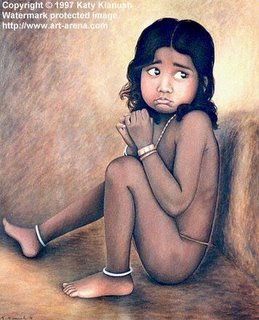Assingment #3
Ok, the assignment from Josh, since we all seem to be on this poetry kick, is this: Write one sonnet, your choice of theme, but it's got to fit the Shakespearean form, i.e. iambic pentameter (or close to it) with an abab cdcd efef gg rhyme scheme. I'll start with an example that I composed some years ago.
Let us not weep for our departed dead,
Our cries and tears cannot help them now.
No, let us weep for ourselves instead
We who remain here to toil and plow.
We for whom life may still hold in store
Pain and anguish, disillusionment and dread,
We mired in filth, we overrun with gore,
No, let us not weep for our departed dead.
Let us be jealous of their easy fate,
Let us hope that we soon too shall follow.
Let us not upon death, but on life turn our hate,
This life made of dumb cruelty, this existance so hollow.
You may notice that not all the lines are exactly 5 iambs, they range from 4.5 to 5.5, but you get the idea.
Let us not weep for our departed dead,
Our cries and tears cannot help them now.
No, let us weep for ourselves instead
We who remain here to toil and plow.
We for whom life may still hold in store
Pain and anguish, disillusionment and dread,
We mired in filth, we overrun with gore,
No, let us not weep for our departed dead.
Let us be jealous of their easy fate,
Let us hope that we soon too shall follow.
Let us not upon death, but on life turn our hate,
This life made of dumb cruelty, this existance so hollow.
Sweet death is reward for a life lived in pain
And only in ignorance do we wish the dead live again.
You may notice that not all the lines are exactly 5 iambs, they range from 4.5 to 5.5, but you get the idea.

